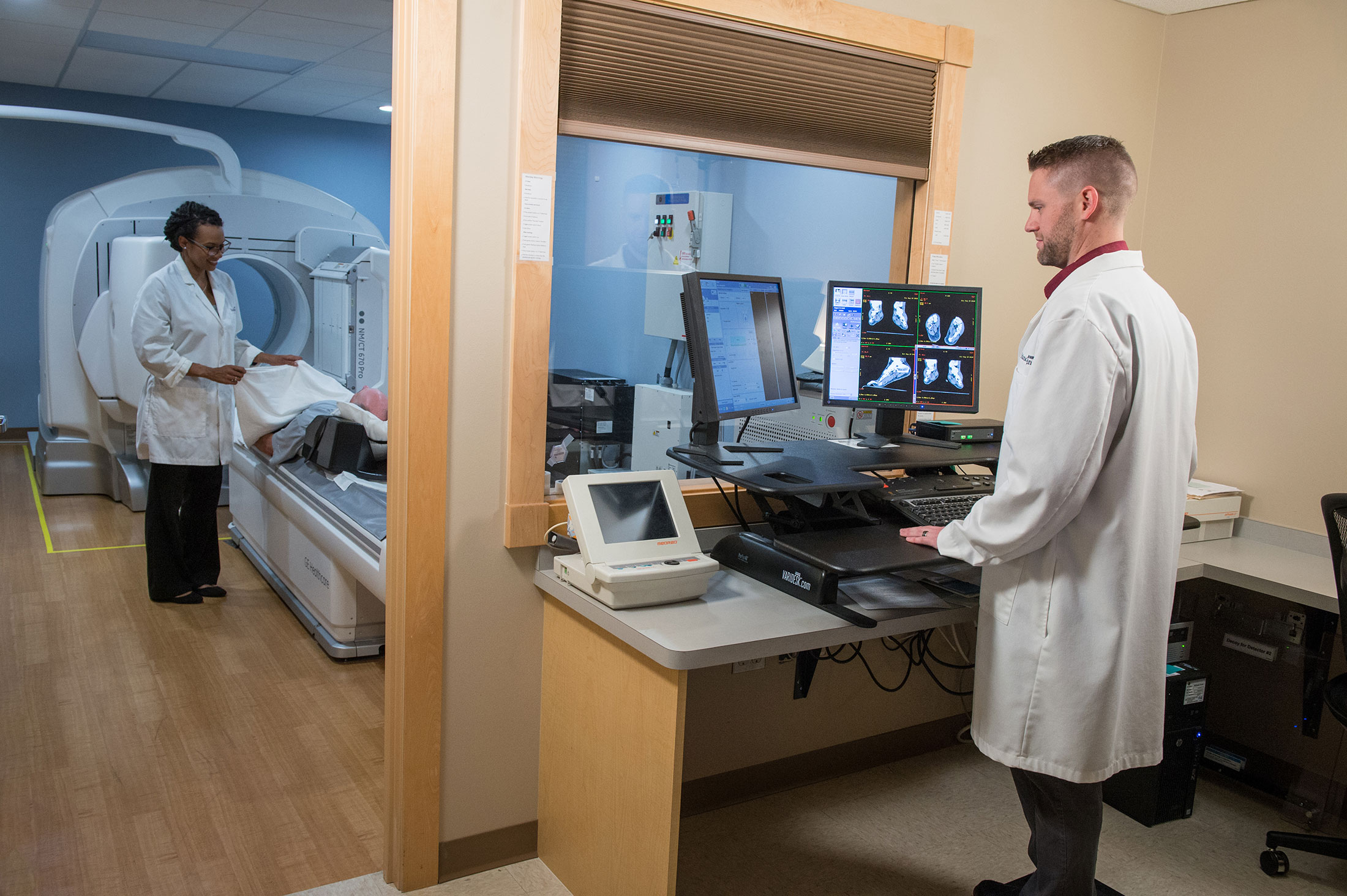BONE IMAGING
A bone scan is a nuclear imaging exam that can help physicians diagnose and treat problems of the bone, such as cancer, arthritis, fractures, infections and other conditions. This test uses a small amount of a radioactive fluid, called a radioisotope, which is absorbed by the bones over time. The gamma camera detects energy from the radioisotope and produces functional images of the skeleton.
What should I expect?
When you first arrive for your bone scan, the technologist will inject a small amount of radioactive material into your vein.
You must drink at least 2 to 4 glasses of water or juice within the first hour following your injection.
After your injection, it takes 2 ½ to 4 hours for the radioactive material to travel to your bones. You can leave the facility during this time. You will be given a time to return for your scan which will take approximately 45 minutes” or something similar.

